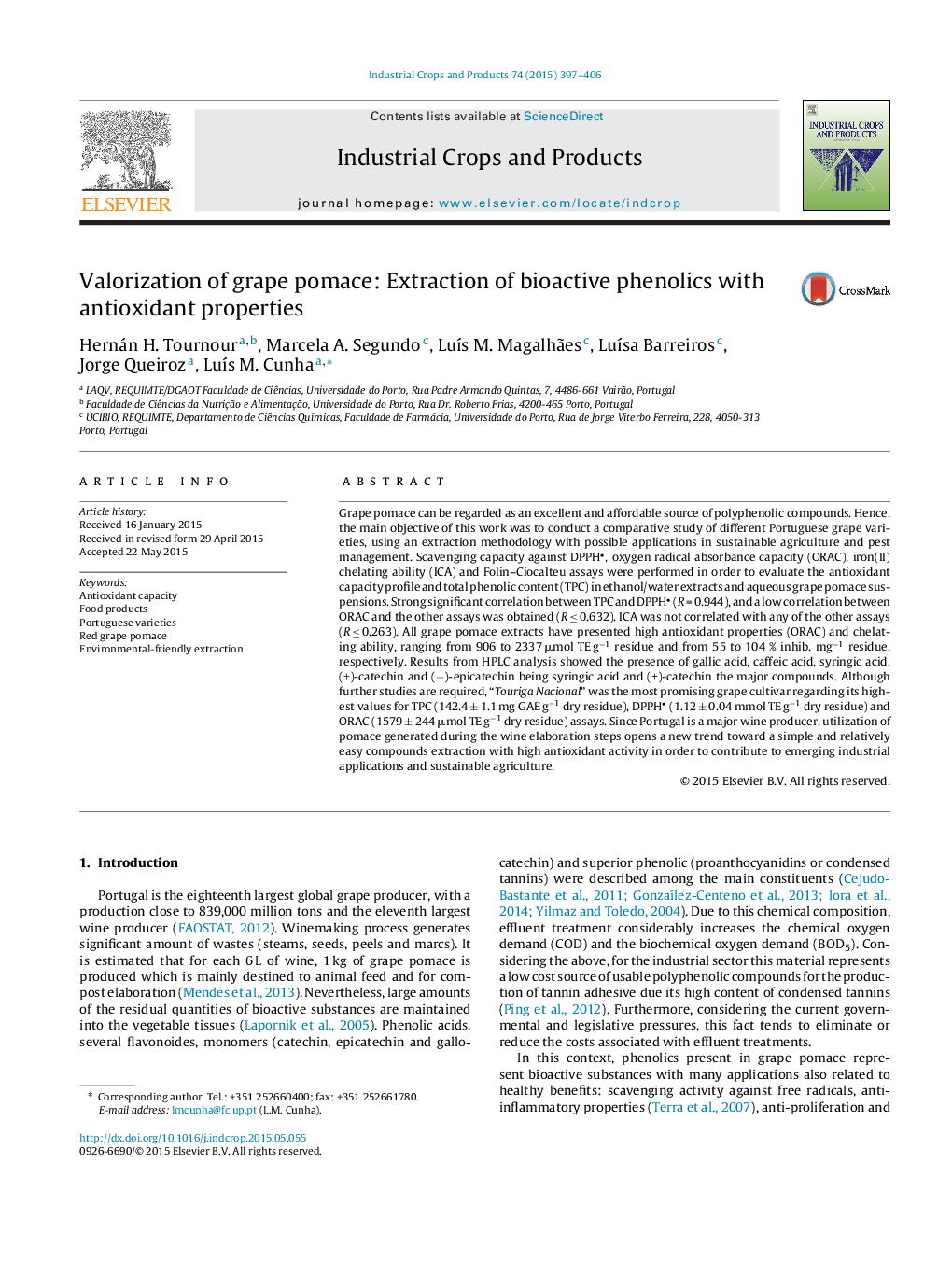| Article ID | Journal | Published Year | Pages | File Type |
|---|---|---|---|---|
| 6375915 | Industrial Crops and Products | 2015 | 10 Pages |
Abstract
Grape pomace can be regarded as an excellent and affordable source of polyphenolic compounds. Hence, the main objective of this work was to conduct a comparative study of different Portuguese grape varieties, using an extraction methodology with possible applications in sustainable agriculture and pest management. Scavenging capacity against DPPH, oxygen radical absorbance capacity (ORAC), iron(II) chelating ability (ICA) and Folin-Ciocalteu assays were performed in order to evaluate the antioxidant capacity profile and total phenolic content (TPC) in ethanol/water extracts and aqueous grape pomace suspensions. Strong significant correlation between TPC and DPPH (R = 0.944), and a low correlation between ORAC and the other assays was obtained (R â¤Â 0.632). ICA was not correlated with any of the other assays (R â¤Â 0.263). All grape pomace extracts have presented high antioxidant properties (ORAC) and chelating ability, ranging from 906 to 2337 μmol TE gâ1 residue and from 55 to 104 % inhib. mgâ1 residue, respectively. Results from HPLC analysis showed the presence of gallic acid, caffeic acid, syringic acid, (+)-catechin and (â)-epicatechin being syringic acid and (+)-catechin the major compounds. Although further studies are required, “Touriga Nacional” was the most promising grape cultivar regarding its highest values for TPC (142.4 ± 1.1 mg GAE gâ1 dry residue), DPPH (1.12 ± 0.04 mmol TE gâ1 dry residue) and ORAC (1579 ± 244 μmol TE gâ1 dry residue) assays. Since Portugal is a major wine producer, utilization of pomace generated during the wine elaboration steps opens a new trend toward a simple and relatively easy compounds extraction with high antioxidant activity in order to contribute to emerging industrial applications and sustainable agriculture.
Keywords
Related Topics
Life Sciences
Agricultural and Biological Sciences
Agronomy and Crop Science
Authors
Hernán H. Tournour, Marcela A. Segundo, LuÃs M. Magalhães, LuÃsa Barreiros, Jorge Queiroz, LuÃs M. Cunha,
